The Everest Base Camp Trek stands out as a remarkable journey, taking adventurers through stunning landscapes and rich Sherpa culture. Over the course of 14 days, trekkers acclimatize in Namche Bazaar, explore historic sites like Tengboche Monastery, and finally reach Kala Patthar for breathtaking views of the world’s highest peak. With experienced guides and comfortable accommodations, it’s designed for both safety and enjoyment. However, before setting off, there are several key elements to consider that can significantly enhance the experience, and understanding these might just make all the difference.
Key Points
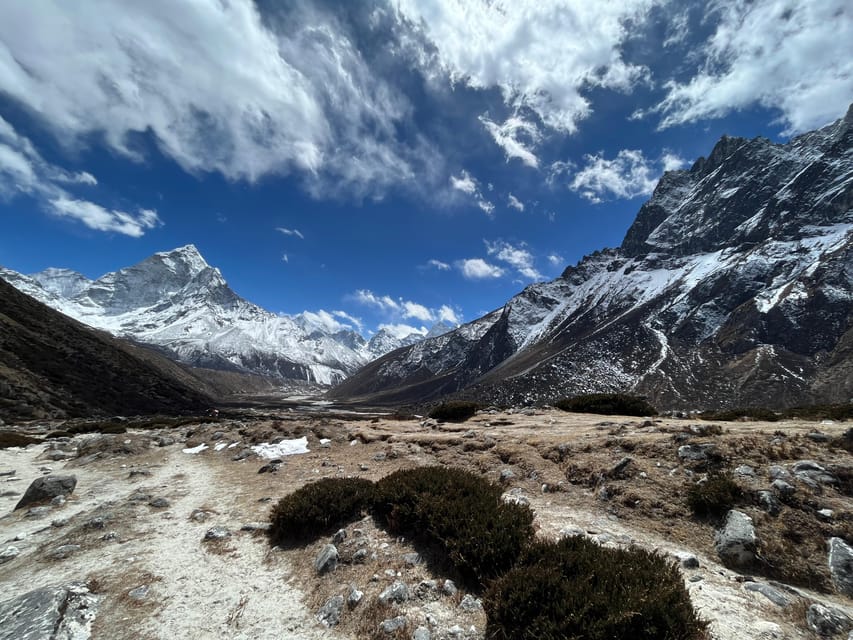
- The Everest Base Camp trek lasts 14 days, reaching an altitude of 5,364 meters for breathtaking views and culture.
- Starting at $1,405.87, the trek includes accommodations, meals, guide, and porter support, but personal expenses are extra.
- The journey begins with a flight to Lukla, followed by key acclimatization in Namche Bazaar and visits to Tengboche Monastery.
- Essential gear includes sturdy trekking boots, layered clothing, and a quality backpack, with a focus on health and safety during the trek.
- Travelers should prepare necessary travel documents, consider insurance, and practice Leave No Trace principles to protect the environment.
Trek Overview and Pricing
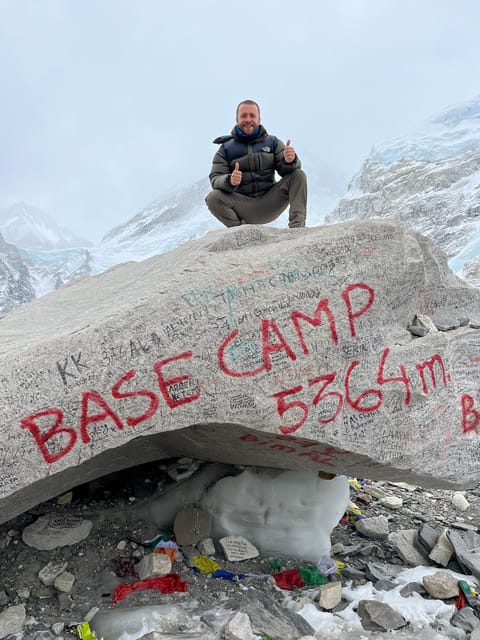
The Everest Base Camp trek is an unforgettable adventure, taking trekkers to the stunning base camp of the world’s highest mountain at 5,364 meters, all for a starting price of $1,405.87 per person.
This trek spans 14 days, offering an immersive experience through breathtaking landscapes and traditional Sherpa villages.
Travelers can cancel their bookings up to 24 hours in advance for a full refund, making it a flexible option.
For those seeking a more personalized experience, private group options are available.
However, participants should note that personal expenses like drinks and tips aren’t included.
Detailed Itinerary
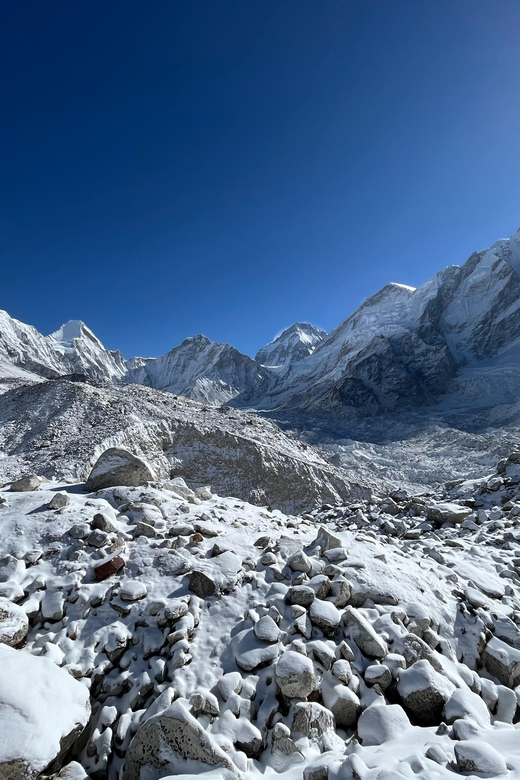
Trekking enthusiasts will find the detailed itinerary for the Everest Base Camp trek to be an exciting blend of adventure, culture, and breathtaking scenery.
Kicking off in Kathmandu, participants explore iconic sites like Swayambhunath before taking a scenic flight to Lukla.
The trek begins with lush valleys leading to Phakding and then Namche Bazaar, where acclimatization is key.
From there, trekkers visit the stunning Tengboche Monastery and continue through picturesque landscapes to Dingboche.
As they push towards Everest Base Camp, they’ll pass memorials and reach Gorak Shep.
The trek culminates with a hike to Kala Patthar for incredible views before descending.
The itinerary wraps up with a return trek to Lukla and a farewell dinner in Kathmandu.
Accommodations and Services
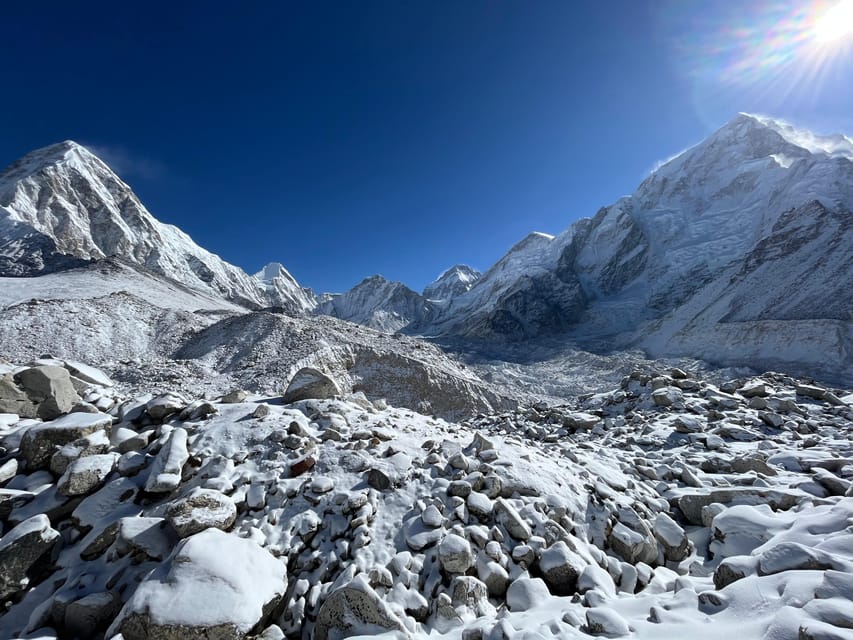
Offering a blend of comfort and practicality, the accommodations and services for the Everest Base Camp trek ensure a memorable experience amidst the stunning Himalayan backdrop.
Travelers enjoy two nights at a 3-star hotel in Kathmandu before embarking on their trek. During the hike, they stay in cozy lodges, providing a warm atmosphere after a day of adventure.
Meals are fully catered, with breakfast, lunch, and dinner included, keeping trekkers fueled for the journey ahead. Each group is accompanied by a skilled guide and a porter, enhancing safety and support.
Essential equipment, like down jackets and sleeping bags, is provided, making the trek accessible. With these thoughtful arrangements, trekkers can focus on the breathtaking landscapes and cultural experiences.
Essential Gear and Equipment
.jpg)
When planning for the Everest Base Camp trek, having the right gear and equipment is crucial for a safe and enjoyable adventure.
Trekking boots with good ankle support are essential, as the terrain can be rocky and uneven. Layering clothing helps manage temperature changes, so pack moisture-wicking base layers, an insulating mid-layer, and a waterproof outer layer.
Don’t forget a sturdy, warm sleeping bag, and a reliable duffle bag for porters. A quality backpack with proper support is also key. Plus, trekking poles can provide stability on steep paths.
Always include a first-aid kit, sunscreen, and sunglasses to protect against the sun’s glare.
With the right gear, trekkers can focus on the breathtaking views and unforgettable experience.
Health and Safety Tips
.jpg)
How can trekkers ensure their health and safety during the Everest Base Camp trek?
First off, acclimatization is crucial; trekkers should take their time, allowing their bodies to adjust to the altitude.
Staying hydrated helps too—drinking plenty of water can prevent altitude sickness.
It’s wise to listen to your body; if someone feels unwell, they should communicate with their guide immediately.
Bringing a well-stocked first-aid kit, along with any personal medications, is essential.
Plus, wearing appropriate gear protects against harsh weather conditions.
Lastly, trekkers should have travel insurance that covers high-altitude trekking, ensuring they’re prepared for emergencies.
Cultural Insights
.jpg)
Trekking to Everest Base Camp immerses adventurers in the rich tapestry of Sherpa culture, where ancient traditions and daily life intertwine amidst breathtaking mountain scenery.
As trekkers navigate the trails, they’ll encounter vibrant monasteries, prayer flags fluttering in the wind, and the warm hospitality of local families.
Sherpas are known for their deep connection to the mountains and their spiritual beliefs, often reflected in their customs and rituals.
Visitors can engage with locals, sample traditional dishes like dal bhat, and learn about their unique way of life.
The vibrant markets in towns like Namche Bazaar showcase local crafts, making for perfect souvenirs.
Embracing these cultural experiences enriches the trek, creating unforgettable memories long after the journey ends.
Environmental Considerations
.jpg)
Environmental considerations play a crucial role in preserving the pristine beauty of the Everest region, ensuring that future generations can enjoy its breathtaking landscapes.
Trekking in this iconic area comes with the responsibility of minimizing human impact. Trekkers should practice Leave No Trace principles, carrying out all trash and using biodegradable products.
Supporting local initiatives, like eco-friendly lodges and community-based conservation projects, helps maintain the delicate ecosystem.
Plus, respecting wildlife and local flora is vital; staying on marked trails reduces soil erosion and protects natural habitats.
Travel Requirements and Preparations
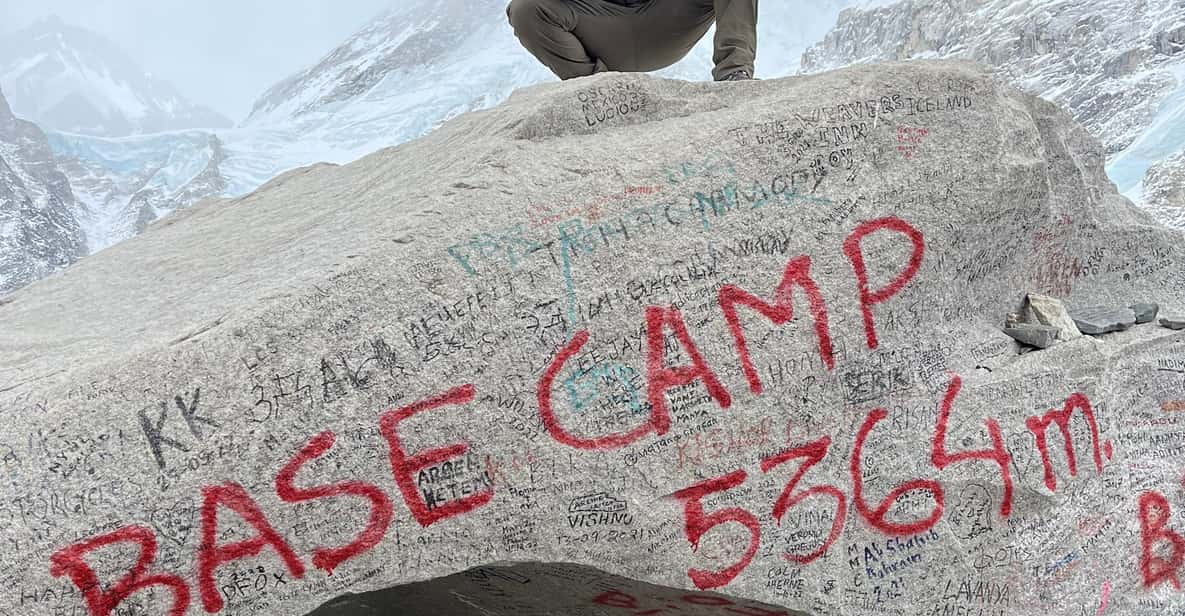
Before embarking on the Everest Base Camp trek, travelers need to ensure they’ve got all necessary travel documents and preparations sorted out for a smooth adventure.
First, securing a valid passport and obtaining a Nepalese visa are essential. Travelers should also consider travel insurance that covers trekking and altitude sickness.
It’s wise to get a health check-up, especially if they’ve pre-existing conditions. Packing appropriate gear is crucial, including sturdy trekking boots and warm clothing, as temperatures can drop significantly.
Plus, arranging for a local guide and porter can enhance the experience.
Frequently Asked Questions
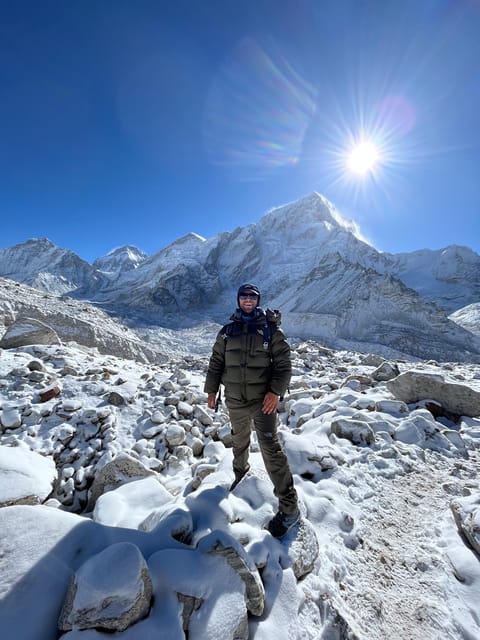
What Is the Best Time to Trek to Everest Base Camp?
When considering the best time to trek, most experts recommend spring or autumn. These seasons offer stable weather, clear skies, and milder temperatures, ensuring trekkers enjoy stunning views and a more comfortable hiking experience.
Are There Any Age Limits for Participants?
They’ve set age limits for participants; children under nine and individuals over seventy aren’t allowed. This ensures everyone’s safety and enjoyment during the trek, making it a practical choice for adventurous travelers.
How Physically Fit Do I Need to Be?
When considering physical fitness, it’s essential to be in good shape. Regular cardio and hiking practice helps. Participants should manage moderate altitudes and endure long days of walking, so preparation’s key for a successful experience.
Can I Extend My Stay in Kathmandu?
Yes, she can extend her stay in Kathmandu. Many travelers choose to explore more of the vibrant city and its surroundings. It’s wise to arrange accommodations in advance, especially during peak tourist seasons.
What Payment Methods Are Accepted for the Trek?
For the trek, they accept various payment methods, including credit cards and bank transfers. It’s best to confirm specifics with the provider, as options might vary based on location and booking conditions.
Recap
To sum it up, the Everest Base Camp Trek is a remarkable journey that combines adventure with culture.
With proper planning, essential gear, and a focus on health and safety, trekkers can fully enjoy the stunning landscapes and vibrant Sherpa villages along the way.
Whether it’s the breathtaking views from Kala Patthar or the warmth of local hospitality, this trek offers an experience like no other.
So, lace up those boots and get ready for an unforgettable adventure!
